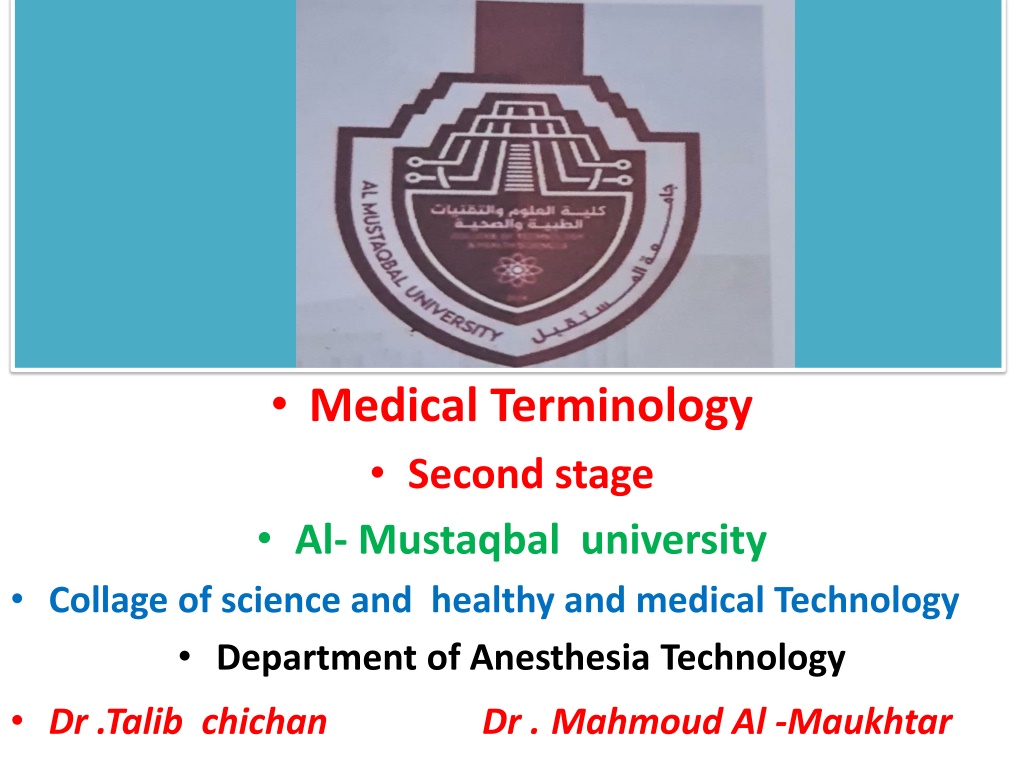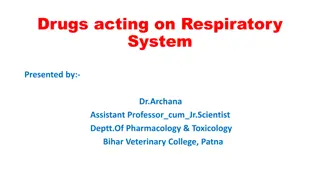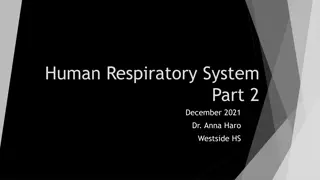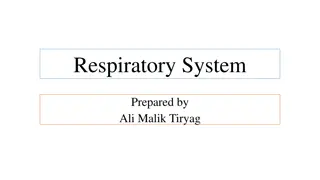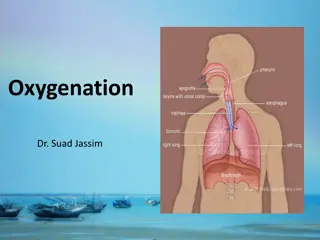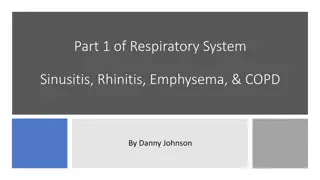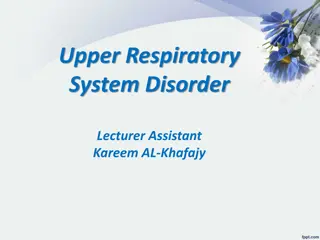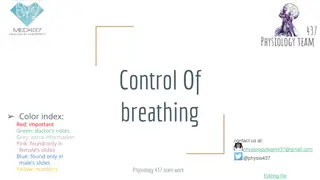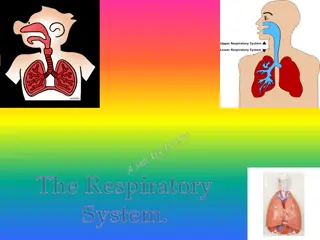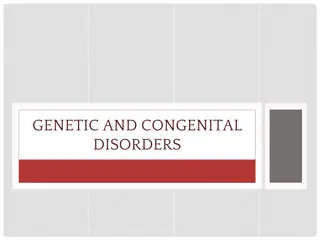Understanding Respiratory System Terminology and Disorders
Explore the terminology and components of the respiratory system including the upper and lower respiratory tract, respiration process, word roots, and common respiratory disorders. Learn the meanings of terms like apnoea, dyspnoea, pneumonia, and more. Enhance your knowledge of respiratory health and anatomy.
Download Presentation

Please find below an Image/Link to download the presentation.
The content on the website is provided AS IS for your information and personal use only. It may not be sold, licensed, or shared on other websites without obtaining consent from the author. Download presentation by click this link. If you encounter any issues during the download, it is possible that the publisher has removed the file from their server.
E N D
Presentation Transcript
Medical Terminology Second stage Al- Mustaqbal university Collage of science and healthy and medical Technology Department of Anesthesia Technology Dr .Talib chichan Dr . Mahmoud Al -Maukhtar
The respiratory system There are two parts of the respiratory system ; 1-Upper respiratory tract consist of the A-Nose( nasal cavity + nasal sinuses) B-Pharynx C- Larynx 2-Lower respiratory tract consist of the A-Trachea B-Bronchi(left+right) C-Lungs(RT+LF) each lung consist of (bronchus+bronchioles+alveoli) Respiration process is achieved by two steps ; A-inspiration = inhalation Breathing in B- expiration = exhalation Breathing out The diaphragm and intercostal muscles help in respiration mainly
Word Root and Combining Vowel for the Respiratory System Root Definition Bronch( (o) bronchus Trach(o) Trachea Bronchi(o) Bronchioles Pharynx Pharyng(o) Laryng(o) Larynx Thorac(o) chest Lob (o) Lob pleur(o) Pleura Nos(o) Nose Epiglott- Epiglottis ,Rhin(o) Plum(o) Lung ,air Ox i pressure of O2 Pneum(o) Lung Ox ia condition of O2 Pneumon(o) Lung diaphragm phren-
Term Meann Aponea Cessation of breathing Tachy ponea Elevated of respiratory rate more than 24b/m Brady ponea Decreased of respiratory rate less than 12b/m Orthoponea Inability to breath easily except in upright position Dysponea Difficult breathing or shortness of breath Hemoptysis Coughing up blood from lower respiratory tract mixed with sputum Pleural effusion Abnormal accumulation of fluid in the pleural space Pneumothorax Accumulation of air in the pleural space Hemothorax Blood accumulating in pleural space Rhinorrhea Drainage of large amount of fluid from the nose Pleurisy sharp Pain during respiration ( specially during inspiration ) Pleuritis Inflammation of the pleura Sinusitis Inflammation of nasal sinuses phrenalagia Pain in diaphragm Alveolitis Inflammation of the alveoli
Term Meaning Bronchiolitis Inflammation of the bronchiole Plumonitis Inflammation of the lung Pneumocystis The lung contains cyst Pneumonia Infection of the lung Treachealagia pain in the trachea Tracherrhagia Bleeding from trachea Tracheitis Inflammation of the trachea Laryngitis Inflammation of larynx Laryngoscope The instrument is used to visualize the larynx Laryngoectomy complete excision of the larynx Pharyngitis Inflammation of the pharynx Nasoscope The instrument is used to visualize the nose Pharyngalagia Pain in the pharynx
Diagnostic Studies of the Respiratory System TERM DEFINITION Arterial blood gases (ABGs) The measurement of the oxygen and the carbon dioxide contents in arterial blood. This gives information about acid base balance and oxygenation. Bronch(o) refers to the bronchus Bronchoscopy -scopy is the visual examination with a lighted instrument. Computed tomography (CT) A technique that uses radiographic to produce an image of the cross section of tissue. This procedure can be used to find masses or tumors in lung
Laryngoscopy Laryng(o) refers to larynx Lung biopsy A test to gather specimen of pulmonary tissue for diagnosis. Lung scan A radiographic examination of the lung to gather information about the lung and the function of the lung. Magnetic Resonance Imaging (MRI) Pulmonary angiography Pulmonary means pertaining to the lungs, Angio refers to Blood vessel ,graphy refers to the proccess of recording so examination of blood vessel of lung Oximetry ,Oxi- refers to oxygen=method for measuring of oxygen in arterial blood Pulmonary function test (PFT) An examination that test the ability of the lungs to exchange oxygen and carbon dioxid
Procedures of the Respiratory System Endo-tracheal intubation Endo=inward ,within tracheal= trachea intubation refers to insertion of the tube in opening in body Tharcocentesis Surgical puncture in the chest to remove or aspirate the fluid Tharcotomy Opening in the chest wall Tracheostomy Formation of an opening through the neck into trachea to access to airway below blockage Person is skilled in pulmonology Science dealing with anatomy ,physiology and pathology of the lung Pulmonologist Pulmonology
Diseases and Conditions of the Respiratory system Term Definition Aspiration pneumonia The condition of the lung caused by the inhalation of foreign Asthma Respiratory condition caused by constriction of the bronchi causing wheeze ,cough &thick bronchi secretion Atelectasis A elect (Greek ) =Incomplete , ecstasies = dilation , extenuation collapse of the alveoli which prevent gas exchange in the alveoli Bronchitis Inflammation of tracheo bronchiole tree caused by viral or bacterial infection Chronic obstructive ,diseases (COPD ) Asthma ,Chronic bronchitis,Emphyemia Chronic bronchiectasis lead to difficulty in inspiration & expiration Emphysema Em=in ,on, physema = over inflation or destruction of alveolar wall causing and decreased gas exchange
Hemoptysis Hem(o) =blood , ptysis=splitting means cough up of blood from respiratory tract Hemothorax The acclamations of the blood in the pleural space of the chest Hypoxia Hypo means insuffient body Oxi=oxygen ,So inadequate oxygen in the Abnormal acclamation of the fluid in pleura space Pleural effusion Hyper =Excessive ,Ventilation means air in and out of the lung (expiration and inspiration) ventilation Hyper Hypo ventilation Hypo =insuffient means decrease in amount of air taken in which is inadequate to metabolic demands Inflammation of parietal layer of the lung Pleurisy Pneumothorax Pneumo =air ,thorax= chest ,means an acclimation of air in the pleural space of the chest causing the lung to collapse Pulmonary embolism Pulmon= lung , embolism= thrombus, air or object that circulate in blood stream causing blockage of pulmonary artery by thrombus usually travelling from peripheral vein
Good luck Thank you
